Despite growing rapidly in the second half of the 19th century, fire protection in the three towns – Buda, Pest and Óbuda – were rudimentary at best. The creation of a professional fire brigade was coined by Count Ödön Szécsenyi, who saw such services at the 1862 London World Fair, and later on his travels through France and Germany. He began organising the Budapest Fire Brigade based on these experiences.
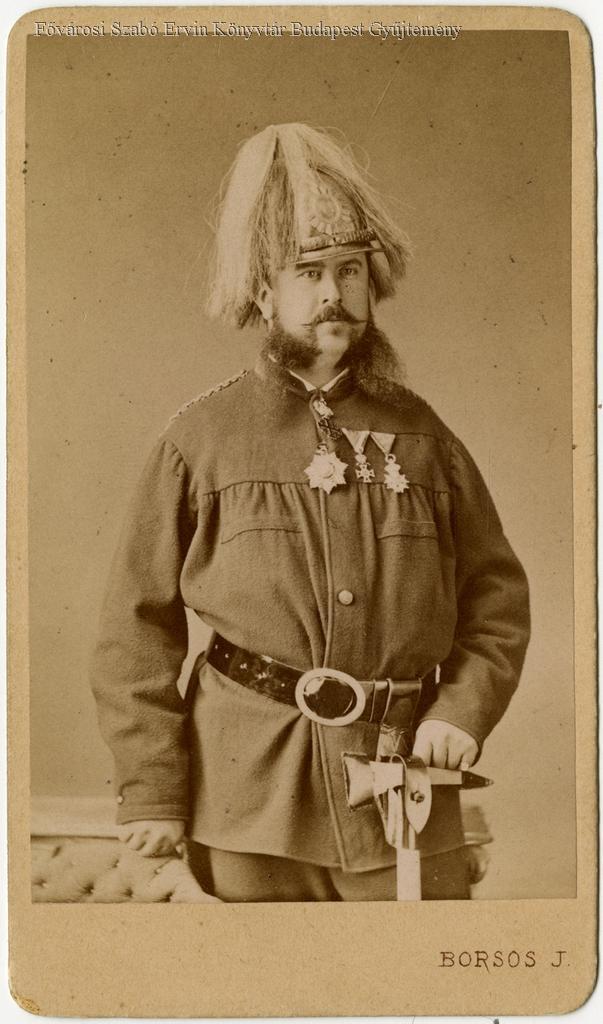
Ödön Széchenyi in fire-fighting uniform, photographed by József Borsos before 1875 (Source: FSZEK Budapest Collection)
He drew up a plan, created an organisational committee and began searching for support. As a result of his efforts, the Budapest Volunteer Fire Brigade was formed in 1863. To secure popular support, firefighters organised demonstrations with hand-held fire extinguishers. By the general assembly held 1869 the volunteer firefighters even had a uniform and the charter of the Firefighting Division of the National Gymnastics and Fire Fighting Society was accepted. A request was submitted to the city of Pest for the council to designate the location of the fire station. The position of training master was created, and training began with a fire truck purchased in London by Ödön Széchenyi.
Although originally fighting for the creation of a volunteer force, the Count quickly recognised that it would not be enough to serve as a constant fire marshal service. He recommended the creation of a paid, professional fire fighting service in 1869.
The Budapest Fire Marshal service began operation on 9 January 1870 at a firehouse on Eskü Square (present-day Március 15. tér. The professional Fire Brigade began operation under the command of Ödön Széchenyi with 12 professional and 40 volunteer members on 1 February.
Parish of the Inner City Parish Church with the firehouse on Eskü Square. Today the pest Bridgehead stands where the buildings once stood (Source: Fortepan/Budapest Archives/Photographs of György Klösz)
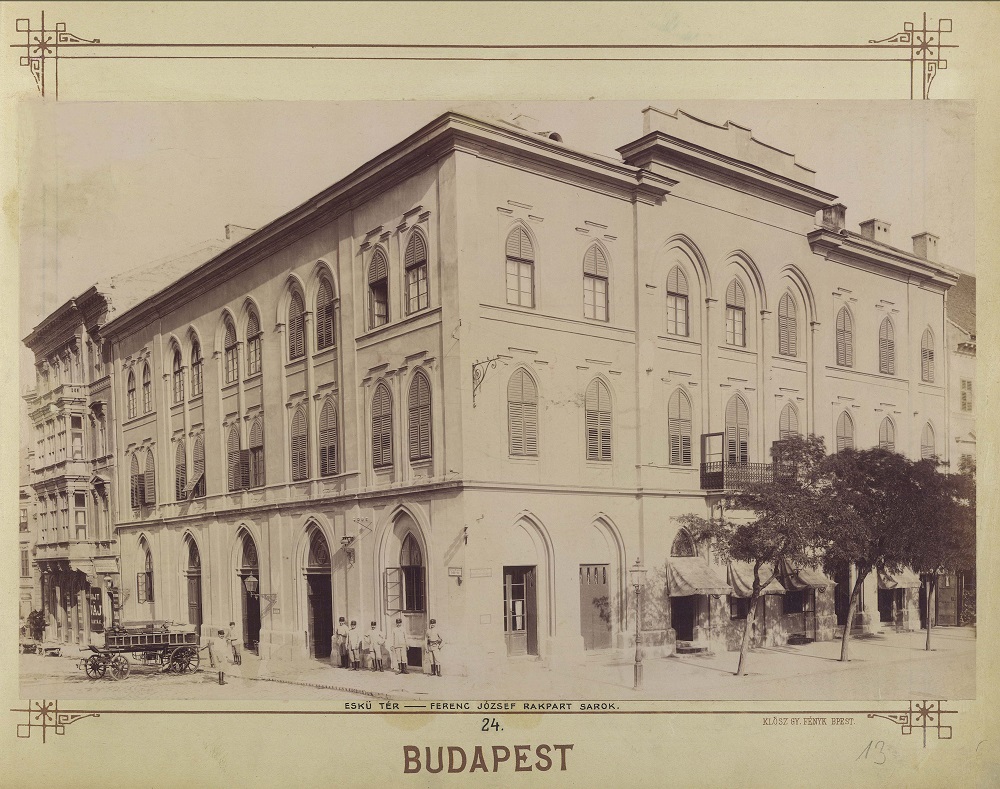
Parish of the Inner City Parish Church with the firehouse on Eskü Square. Today the pest Bridgehead stands where the buildings once stood (Source: Fortepan/Budapest Archives/Photographs of György Klösz)
Széchenyi purchased the first steam-powered water pump from London himself but also designed a horse-powered water pump and hose system with a 500-litre water tank. The hoses were removed from the cart when in use and connected to the tank. He later revised the design, and the hoses remained on the cart, mounted on a rotating base.
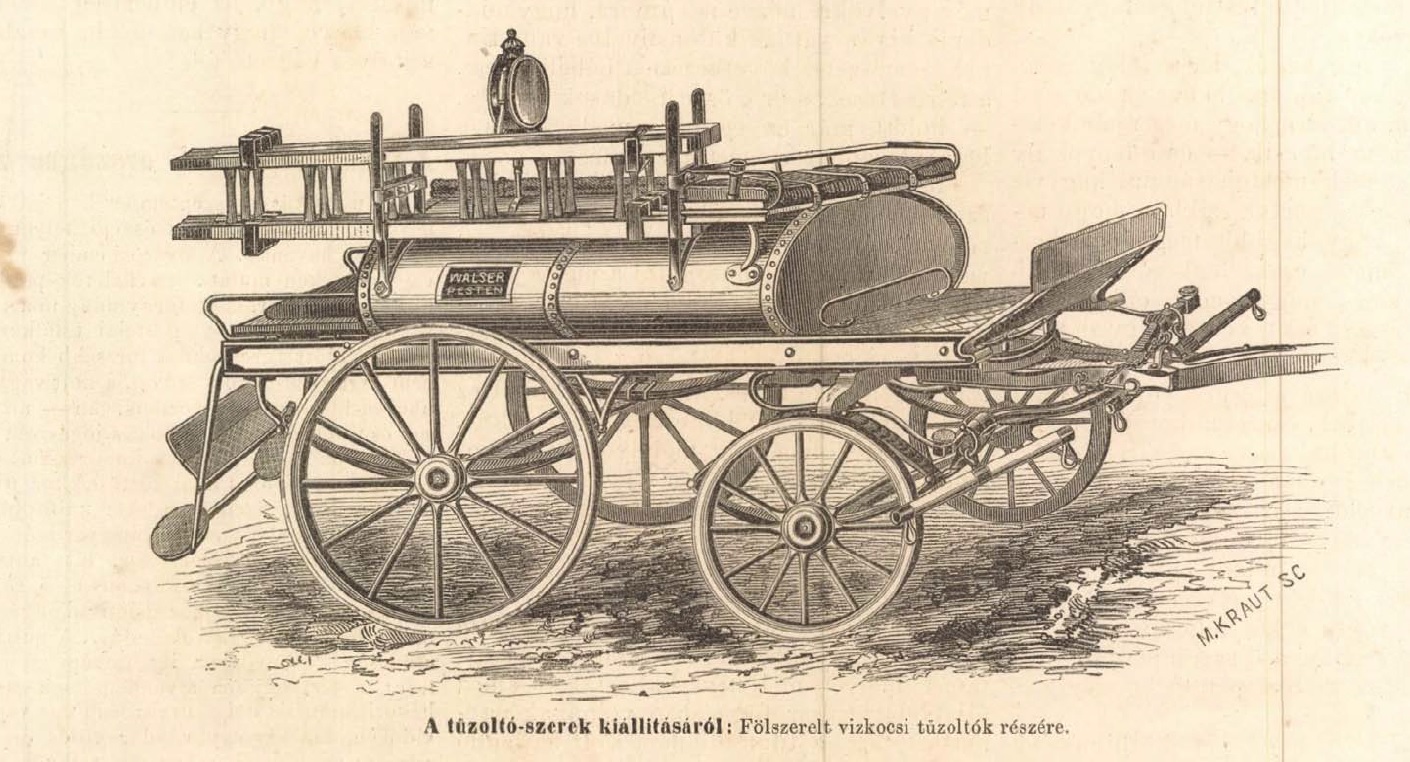
A fire carriage with a water tank photographed at an exhibition (Source: Vasárnapi Újság, 24 September 1871)
In September 1871 the fire brigade held a large ceremonial drill, the first Fire Fighting Society Gala in the courtyard of Újépület. Even the Austrian Emperor visited the event. A four-storey wooden house was built for the event, on which they demonstrated ladder-use, house climbing and fire-fighting. Beyond firefighters from Budapest and other parts of Hungary, international squads also participated.
A sad event proceeded the drill. On 13 September 1871, a fire started in a storage room of the National Theatre. The flames were barely contained though a massive effort, proving the need for a professional fire brigade in Budapest.
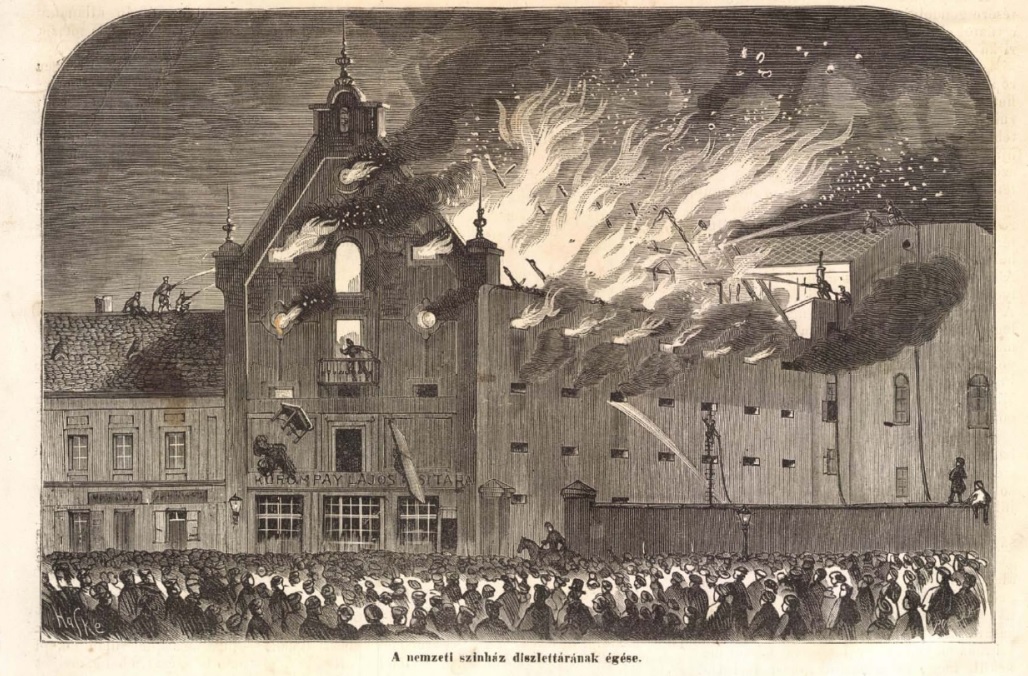
The National Theatre storehouse on fire, September 1871 (Source: Vasárnapi Újság, 24 September 1871)
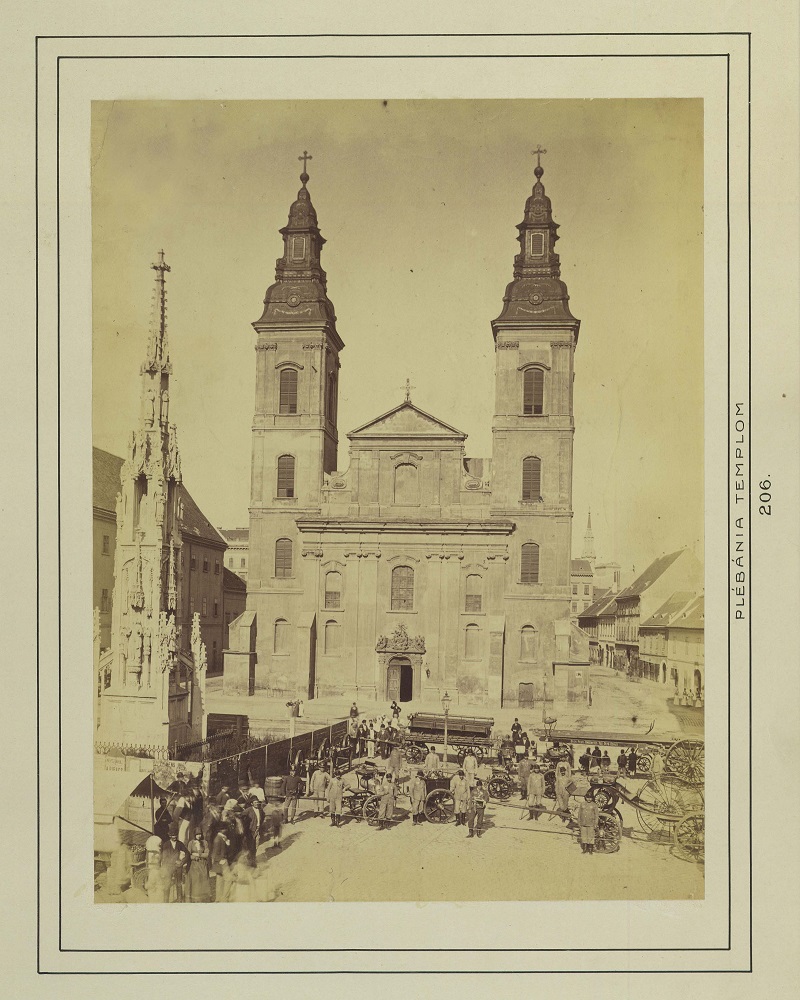
The ceremonial drill of the Buda Pest Voluntary Fire Brigade in front of the Inner City Parish Church
on Eskű (present-day Március 15.) Square around 1880 (Source: Fortepan/Budapest Archives/Photographs of György Klösz)
Following its creation, the Fire Brigade grew rapidly in Budapest. by 1874 200 volunteers, and 63 professionals had joined. In 1876 the first Hungarian steam-pump was also completed and named Budapest. In 1880 the first 30-metre fire fighting ladder was purchased, followed by a second in 1899.
In 1881 firefighters were given the status of employees of the city. Their work and number were regulated. Despite the position officially being civil service they were not granted a pension at the time. The first fire safety ordinance, which regulated fire marshal and fire fighting activities, was created in 1883.
Meanwhile, the headquarters of the fire brigade was moved to a building on the corner of Kun Street and Dologház Street. The tower of the newly constructed barracks housed a lookout, which could see nearly all of Budapest. The courtyard was large enough for the entire fire brigade to conduct drills, and a large gate was created for fire fighting equipment to move through. The building is still one of the most important buildings used by the Budapest Fire Brigade.
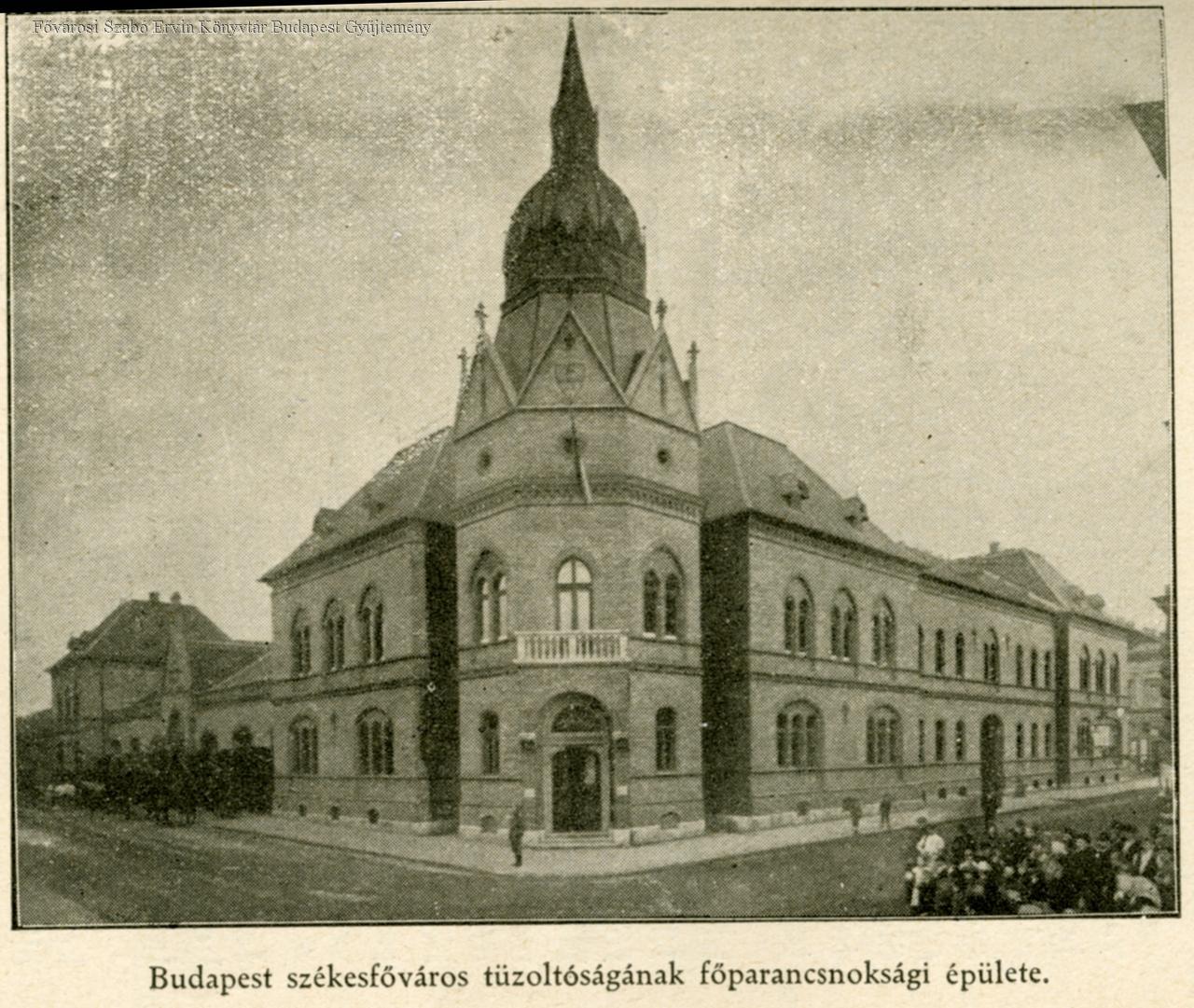
Headquarters of the Budapest Fire Brigade in 1925 (Source: FSZEK Budapest Collection)
%201925%20fszek%20bp.jpg)
Tactical unit of the Budapest Fire Brigade in 1925 (Source: FSZEK Budapest Collection)
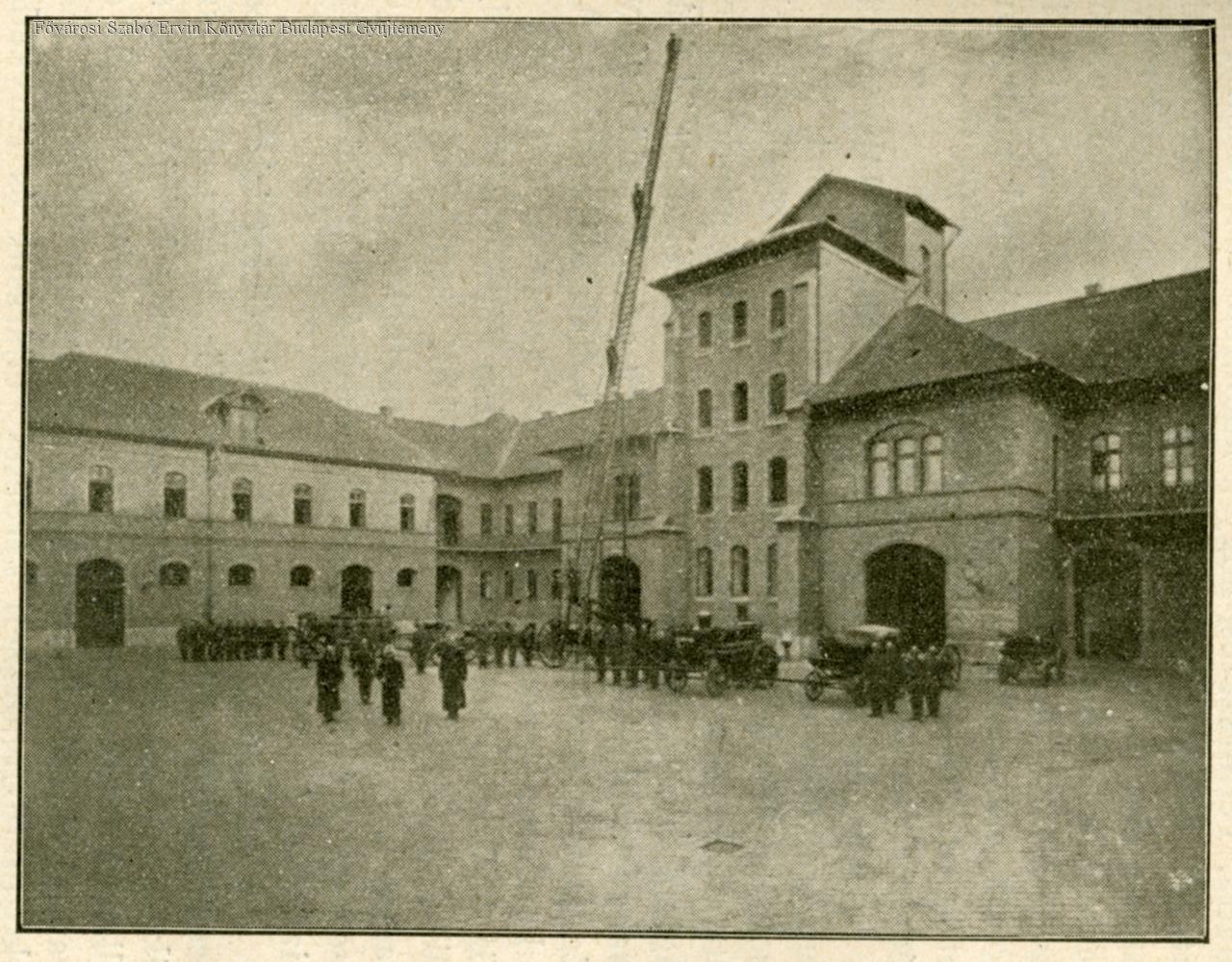
Drill of the professional Budapest Fire Brigade in the courtyard of the barracks in 1925 (Source: FSZEK Budapest Collection)
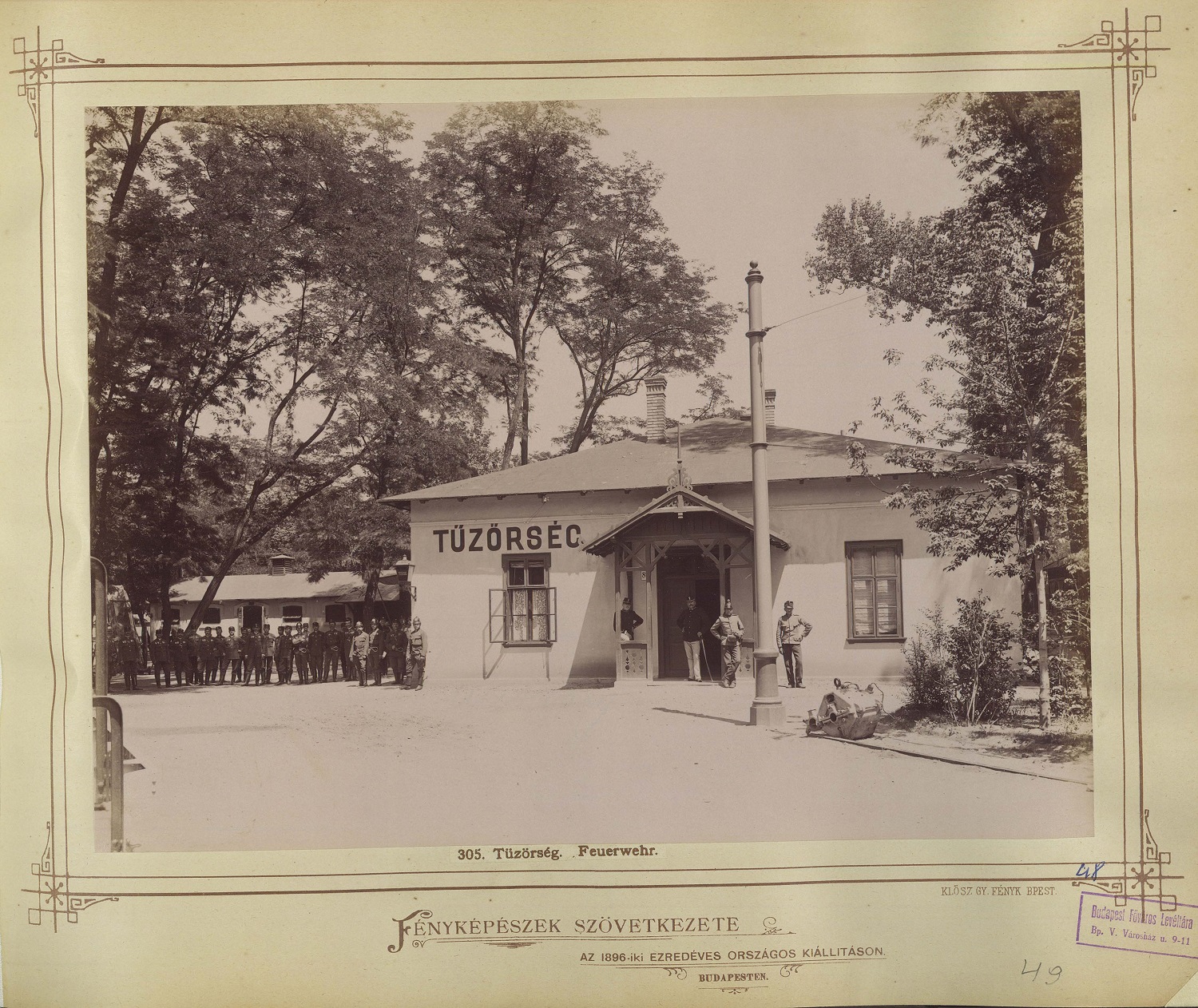
A standing fire lookout worked at the Millennium Celebration Fair in City Park from 1 April 1896 to 1 February 1897. They intervened in 42 cases (Source: Fortepan/Budapest Archives/Photographs of György Klösz)
Yet another steam-pump was purchased at the end of the century, and a 26-metre-long rotating sliding ladder. The fire brigade was also the first in Europe to use a petrol-powered vehicle pump, which was especially useful during the 24 august 1903 fire of the Párisi Department Store. Fire alarms were also replaced with telephone lines.
In 1908, the capital finally recognised firefighters as part of its permanent staff and extended retirement benefits to them. The vehicle fleet was slowly expanded, and petrol combustion engines became the norm.
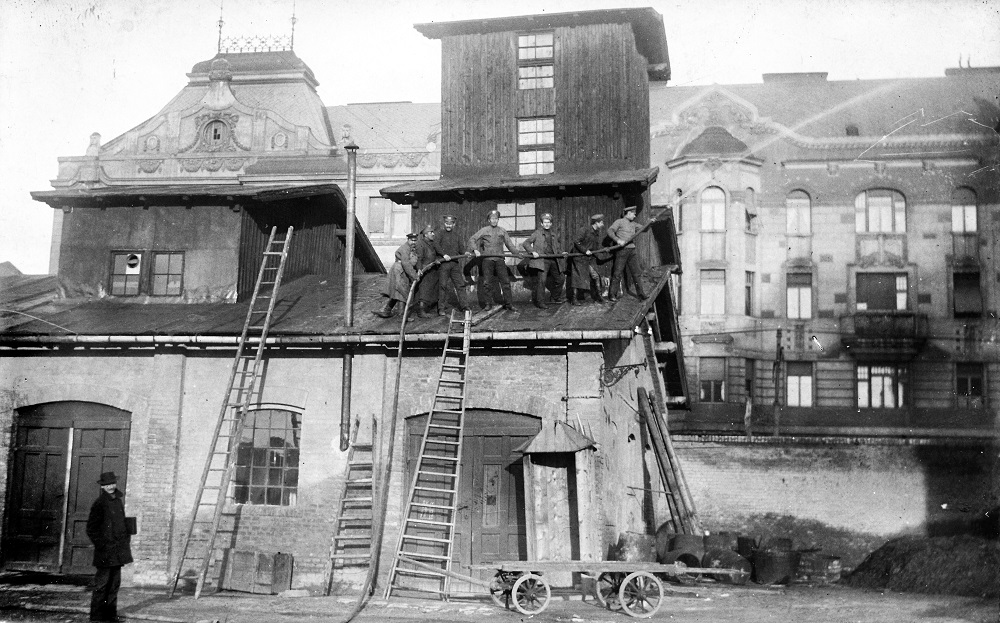
Firefighters in the natural gas factory 12–14 Fiumei Road in the background, 1910 (Photo: Fortepan/No.: 69936)
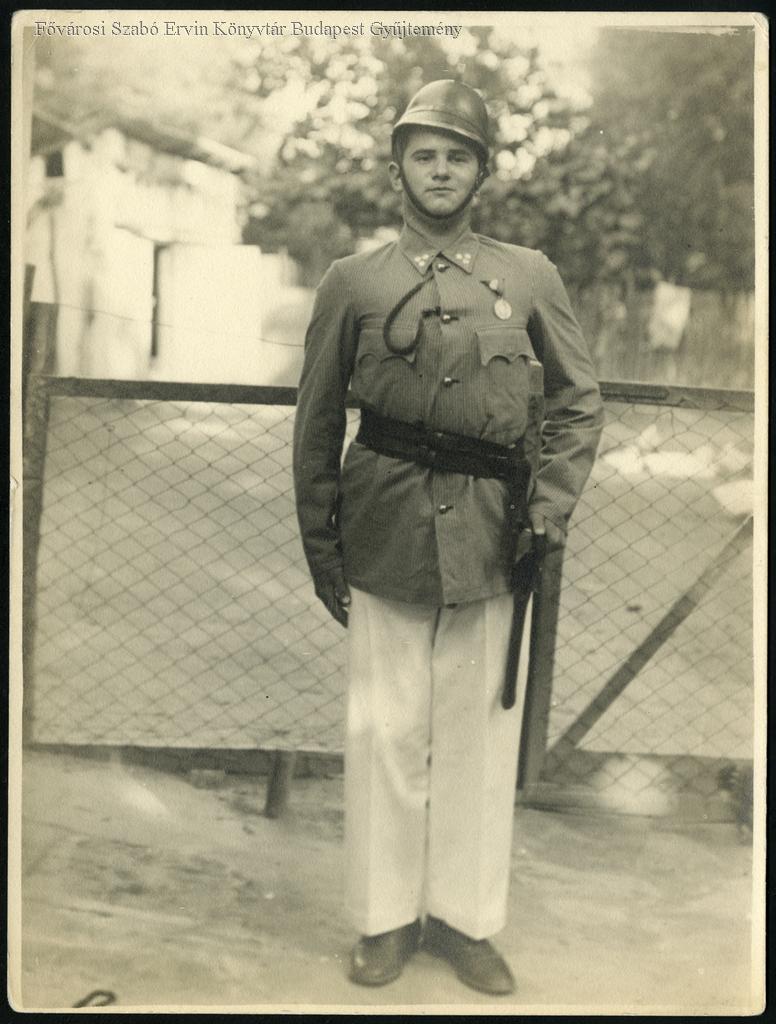
A volunteer firefighter in the 1920s (Source: FSZEK Budapest Collection)
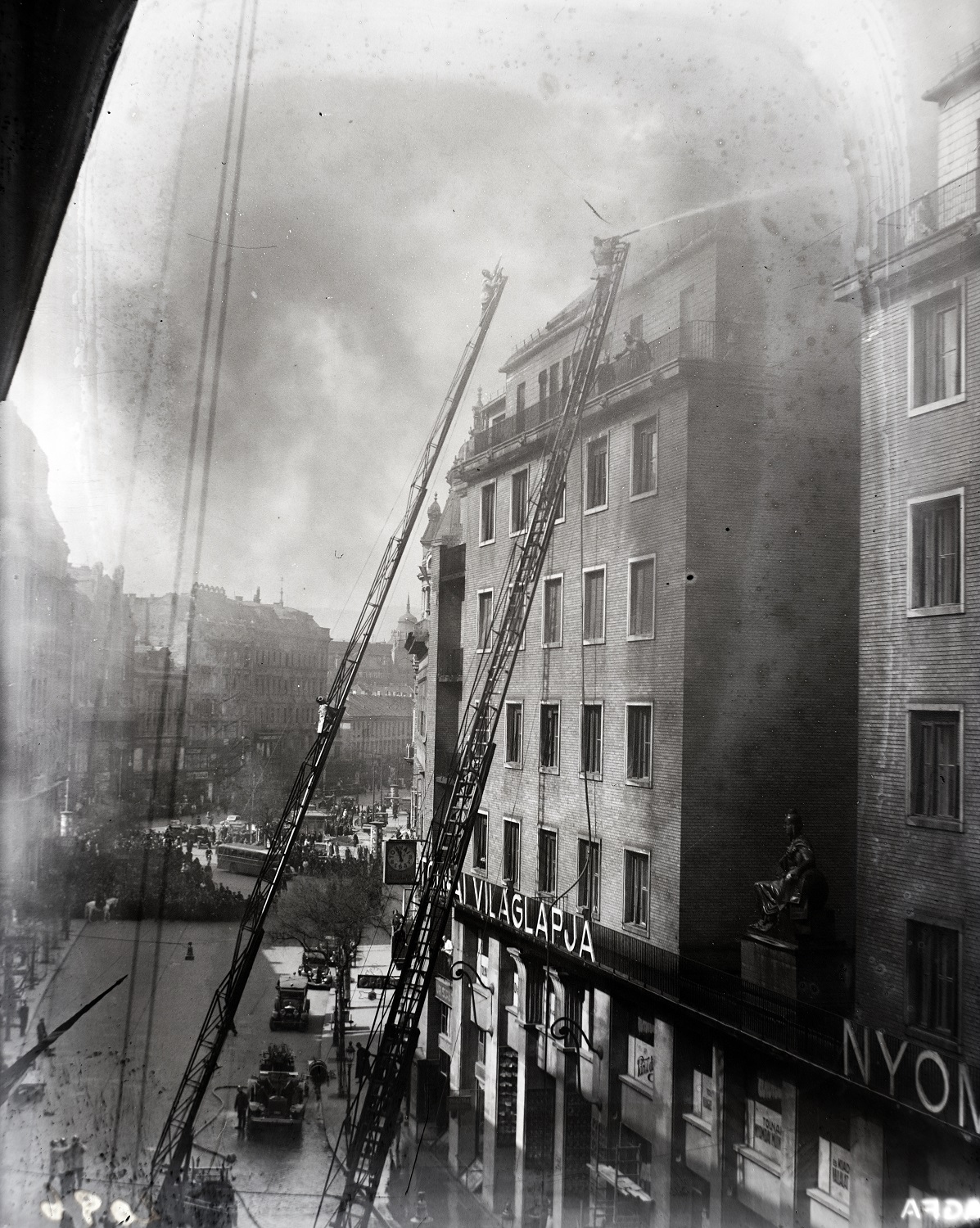
Firefighters extinguish a fire in the roof of the headquarters of Tolnai Nyomdai Műintézet és Kiadóvállalat Rt. at 12–14 Dohany Street
(Photo: Fortepan/No.: 177046)
During the First World War, the majority of the service enlisted. To ensure fire safety, a people's fire brigade was set up. In the interwar years, the vehicle fleet and the equipment of firefighters improved drastically. However, a large portion of these was destroyed in the Second World War. Several bombs hit the barracks on Kun Street. Eventually, 85% of firefighting equipment that survived the war ended up in the West. After the world war, the entire Fire Brigade had to be reorganised. Its priority was to disarm unexploded bombs and explosives.
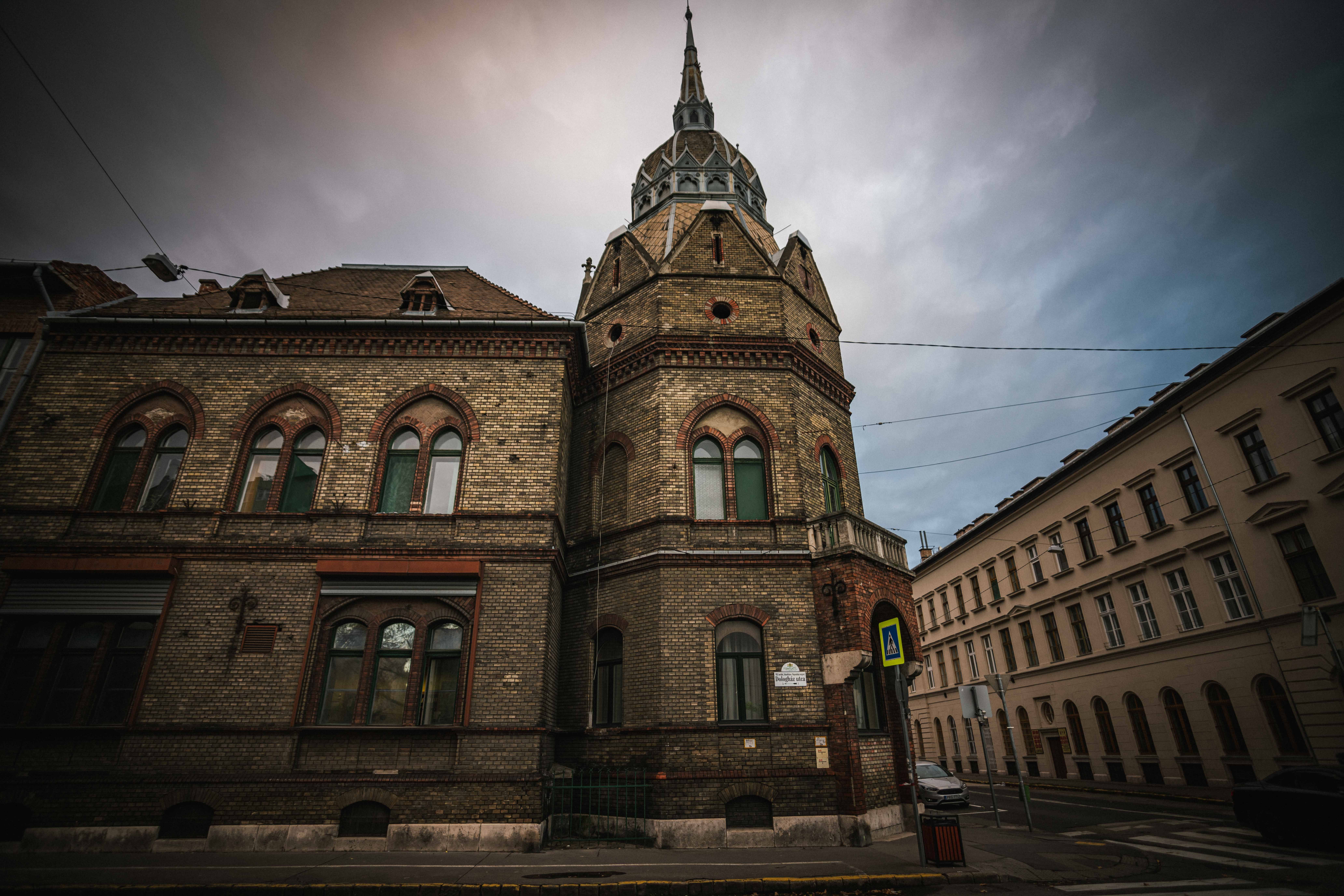
The barracks on the corner of Kun Street and Dologház Street turned 125 this year (Photo: Róbert Juharos/pestbuda.hu)
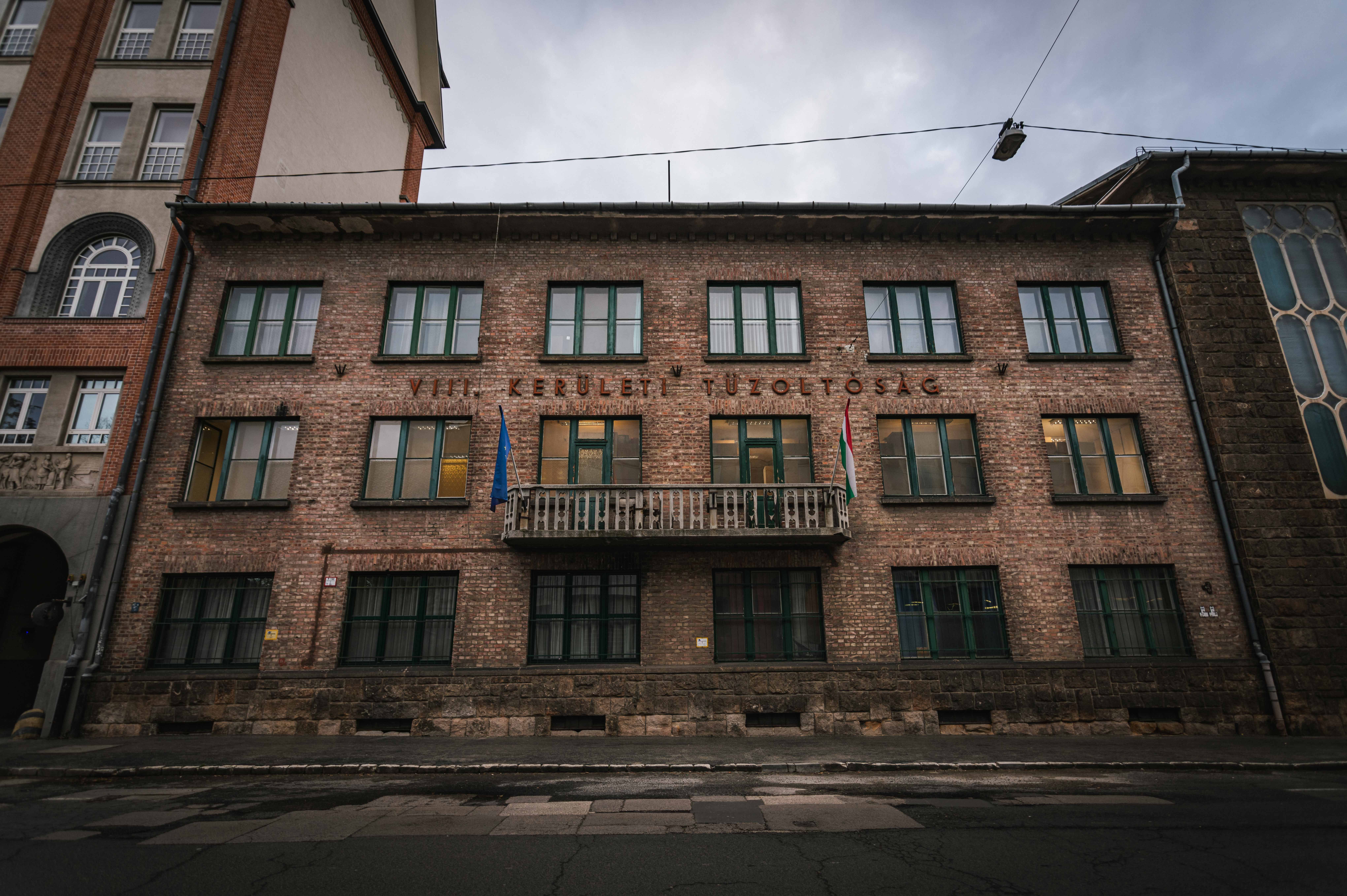 8th District Fire Brigade at 3 Dologház Street (Photo: Róbert Juharos/pestbuda.hu)
8th District Fire Brigade at 3 Dologház Street (Photo: Róbert Juharos/pestbuda.hu)
In 1946 the Budapest Fire Brigade became a state-run public entity, and personnel training became a central focus.
The events of October 1956 also put the firefighters in a difficult position as they worked to put out fires that broke out in the National Archives and the National Museum.
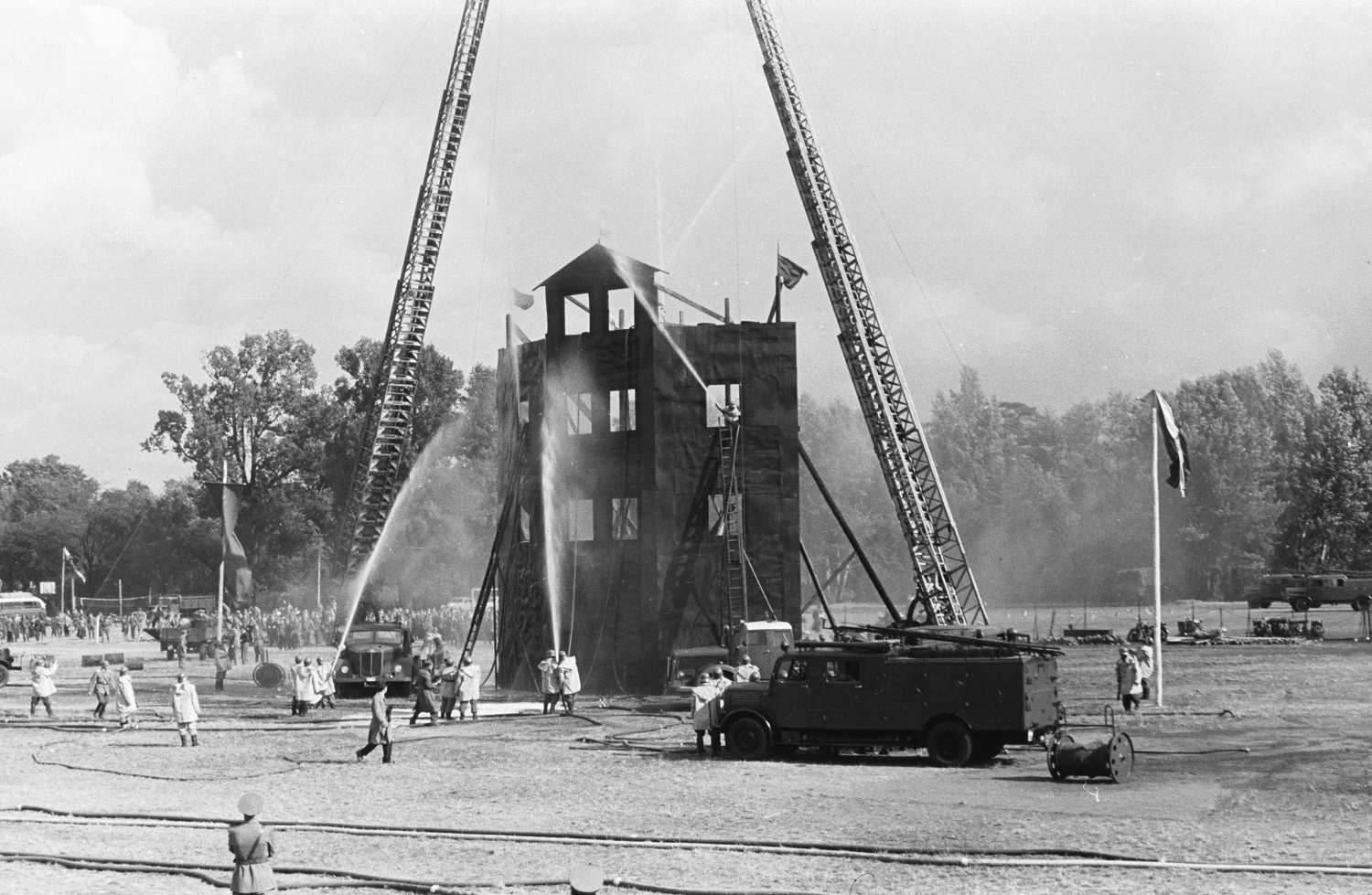
The Latorca Street sports field during a public drill of the Fire Brigade in 1961 (Photo: Fortepan/No.: 175816)
In the 1970s the TŰ-series appeared to replace the Csepel trucks during the development of the vehicle fleet. The 1980s served as a period of technical reform. The first oxygen tanks were used, and the first snorkel trucks appeared, with baskets on their cranes.
In 1995 operating local fire brigades became the responsibility of local councils and the National Fire and Civil Protection Command was tasked with overseeing them. In 2000 the National Fire Chief's Department within the Ministry of the Interior closed, and the National Directorate General for Disaster Management was created. In January 2012 a centralised emergency response organisation was created.
"The Budapest Directorate for Disaster Management was created on 1 January 2012 through the unification of the Budapest Fire Brigade, the Civilian Defence Directorate and the Airport Disaster Management Directorate. Its main goal is to ensure the health and security of Budapest's population, ensure the safe operation of key elements of the national economy and infrastructure, which is considered a public safety task of the utmost importance" – reads their website.
Over the past 150 years, firefighters have been called to tens of thousands of fires, including hazardous industrial fires. But they do heroic work whenever human life is at risk, be it an accident or flood.
Beyond saving lives and extinguishing fires, the Budapest Fire Brigade has always held public demonstrations and drills and continues this tradition. One of their most stunning displays was given in August 1940 as part of the Saint Stephen's week celebrations. Standing on the lower Buda embankment, 30 small motorised pumps drew water from the Danube which was pushed through 120 hoses from which the water reached into the sky and fell back into the Danube as a curtain of water.
Their official orchestra was formed in 1938 (Orchestra of the Budapest Fire Brigade, now the Central Orchestra of Disaster Management) which has given concerts in City park, Buda Castle, on Batthyány Square and continues to perform at home and abroad.
Cover photo: The barracks on the corner of Kun Street and Dologház Street turned 125 this year (Photo: Róbert Juharos/pestbuda.hu)

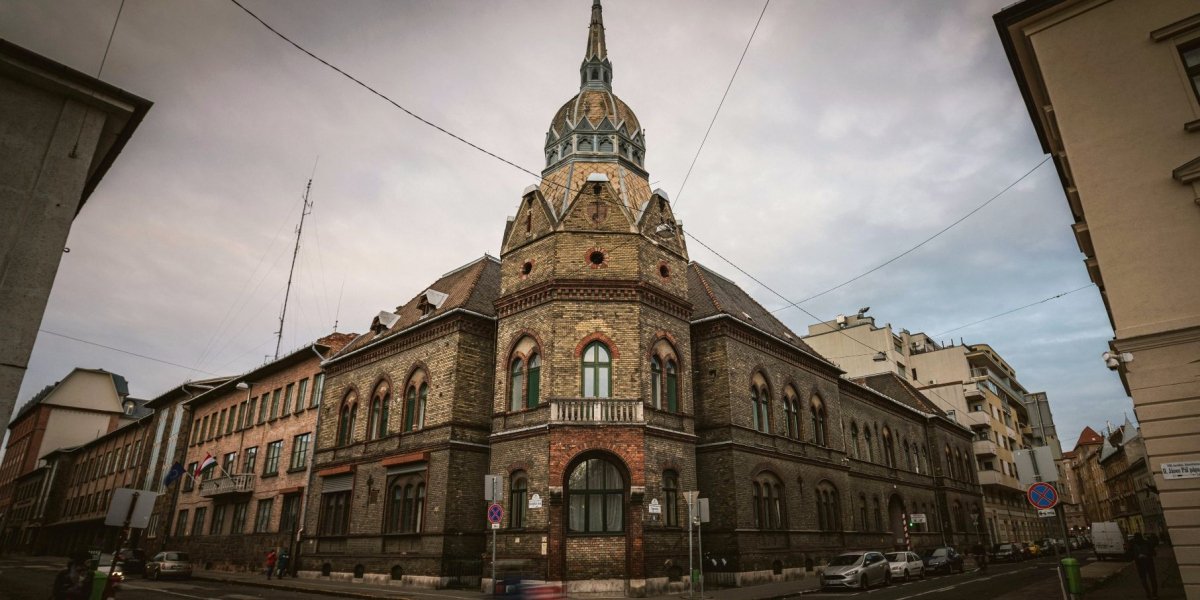


































Hozzászólások
Log in or register to comment!
Login Registration